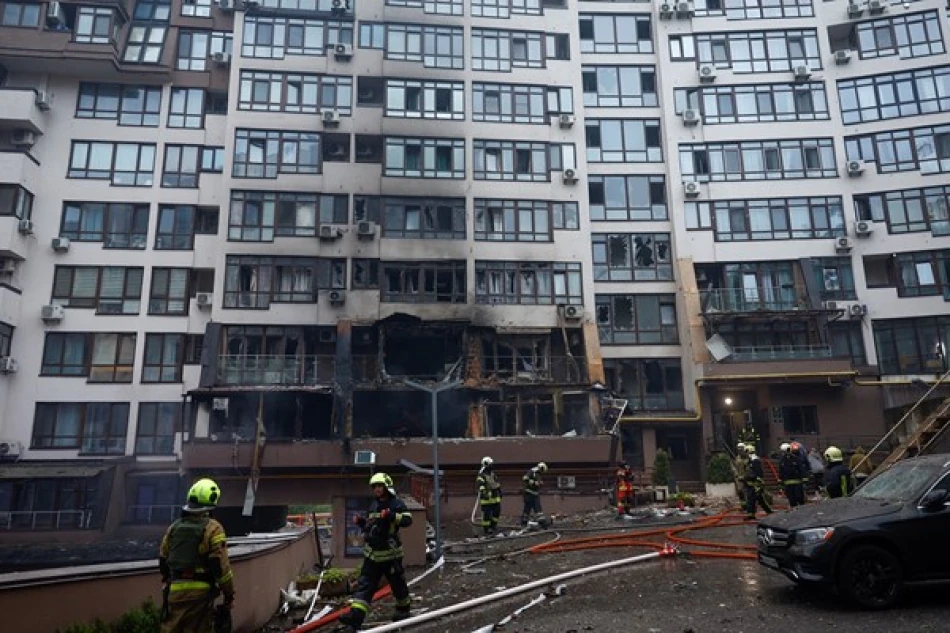
Kyiv Thwarts Drone Attack: Defensive Action Safeguards Ukrainian Capital
Ukraine Intercepts 78 of 83 Russian Drones in Massive Overnight Assault
Ukrainian air defenses demonstrated remarkable effectiveness Sunday, shooting down 94% of Russian drones in one of the largest overnight aerial bombardments since the conflict began. The successful interception of 78 out of 83 attack drones launched from multiple Russian regions highlights Ukraine's evolving defensive capabilities, even as both sides escalate their drone warfare strategies with increasingly sophisticated unmanned aerial campaigns.
Coordinated Russian Strike Spans Multiple Launch Points
Russian forces orchestrated the Saturday night assault using 83 drones deployed from five strategic locations across Russian territory, according to Ukraine's Air Force statement on Telegram. The launch sites included Oryol, Kursk, Shatalovo, Millerovo, and Primorsko-Akhtarsk, demonstrating Moscow's ability to coordinate multi-vector attacks designed to overwhelm Ukrainian defenses.
The geographic spread of launch points—stretching from Russia's western border regions to areas deeper within Russian territory—suggests a calculated strategy to strain Ukraine's air defense resources and create multiple simultaneous threats across different sectors.
Ukrainian Defense Networks Prove Resilient
Ukraine's successful interception rate of 94% represents a significant tactical victory, achieved through coordinated efforts between air defense units, specialized drone warfare teams, and mobile fire groups. The drones were neutralized across Ukraine's northern, southern, eastern, and central regions, indicating comprehensive coverage of the country's airspace.
This interception success rate surpasses many previous engagements and suggests Ukraine's air defense capabilities have matured considerably since the conflict's early stages. The integration of Western-supplied air defense systems with existing Soviet-era equipment and newer mobile units appears to be creating layered defensive networks capable of handling mass drone attacks.
Escalating Drone War Reaches New Intensity
The scale of Saturday's exchange—with Russia launching 83 drones and Ukraine reportedly sending 99 toward Russian territory—underscores how unmanned aerial warfare has become the conflict's dominant feature. Both sides are increasingly relying on relatively inexpensive drones to conduct sustained campaigns that would be prohibitively costly using traditional aircraft and missiles.
Russia's confirmation that its air defenses destroyed 99 Ukrainian drones over multiple regions indicates this aerial chess match is intensifying on both sides. The numbers suggest both militaries are now capable of launching drone swarms exceeding 80-100 units in single operations—a scale that would have been unimaginable at the conflict's outset.
Strategic Implications for Modern Warfare
The overnight engagement offers crucial insights into how drone warfare is reshaping military strategy. Ukraine's high interception rate demonstrates that mass drone attacks, while disruptive, are not necessarily decisive when facing prepared defenses with adequate early warning systems and coordinated response protocols.
For military analysts worldwide, this engagement provides valuable data on the effectiveness of layered air defense strategies against swarm attacks. The Ukrainian approach—combining traditional air defense systems with mobile teams and specialized anti-drone units—may become a template for other nations facing similar threats.
The sustainability of such intensive drone exchanges remains questionable for both sides, as manufacturing and operational costs accumulate. However, the current trajectory suggests drone warfare will continue escalating, with both militaries likely developing countermeasures and more sophisticated unmanned systems in response to their opponent's evolving capabilities.
Most Viewed News

 Layla Al Mansoori
Layla Al Mansoori






